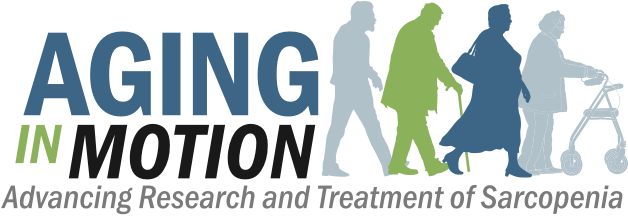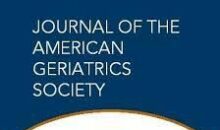ICD-10-CM Sarcopenia Code Press Kit
Welcome to the press kit about the establishment of an ICD-10-CM code for sarcopenia. For a link to the press release, please go here.
What is sarcopenia?
Sarcopenia is the progressive loss of skeletal muscle that comes with aging. Most people begin to lose modest amounts of muscle mass after age 30, but the resulting loss of strength increases exponentially with age. Sarcopenia is thought to play a major role in the increased frailty and functional impairment that comes with age. Possible effects of sarcopenia include decreased muscle strength, problems with mobility, frailty, falls and fractures, decreased activity levels, and a loss of physical function and independence. Find out more by consulting this sarcopenia fact sheet.
What is the Aging in Motion Coalition?
The Aging in Motion (AIM) Coalition is a diverse group of patient, caregiver, health, and aging groups working together to press for greater levels of research and innovation to develop treatments in the area of sarcopenia and age-related functional decline. Initiated by the Alliance for Aging Research in 2011, the AIM Coalition’s members are leading ongoing interactions with clinicians, regulators, and policy influencers to overcome obstacles that impede the development and evaluation of promising treatments for sarcopenia and associated functional decline in people as they age. Among its primary founding goals was to realize an ICD-10-CM code for sarcopenia, an effort that it has led since submission of a proposal in 2014.
What is ICD-10?
ICD-10 is the 10th revision of the International Classification of Disease, a list of codes established by the World Health Organization (WHO) that serves as the “standard diagnostic tool for epidemiology, health management and clinical purposes.” According to WHO, these codes are “used by physicians, nurses, other providers, researchers, health information managers and coders, health information technology workers, policy-makers, insurers, and patient organizations to classify diseases and other health problems recorded on many types of health and vital records, including death certificates and health records. In addition to enabling the storage and retrieval of diagnostic information for clinical, epidemiological and quality purposes, these records also provide the basis for the compilation of national mortality and morbidity statistics by WHO Member States. Finally, ICD is used for reimbursement and resource allocation decision-making by countries.”
Why does it matter for sarcopenia?
An ICD-10-CM code for sarcopenia means that in the eyes of the international medical community it is now recognized as a distinctly reportable condition. This recognition removes a major barrier to treatment and research on several fronts. For one, it will improve diagnosis of the condition by doctors and further recognition of the disease among other health care professionals.
For researchers, it will give access to more comprehensive data about the condition, including Electronic Medical Records, Death Certificates, and other system data sources. With this additional information, universal clinical guidelines for diagnosis and treatment of sarcopenia can be established. It could also open the door for new discoveries into this condition.
Finally, this code could ultimately lead to the acceleration of new therapies to treat sarcopenia that will give older adults a higher quality of life.
What are the next steps?
The next steps for the AIM Coalition include: encouraging sarcopenia screening and diagnosis standards, working with partners to educate providers about the new code, expanding access to sarcopenia treatments, and collaborating with stakeholders to develop an international consensus on clinically relevant aspects of the disease.

